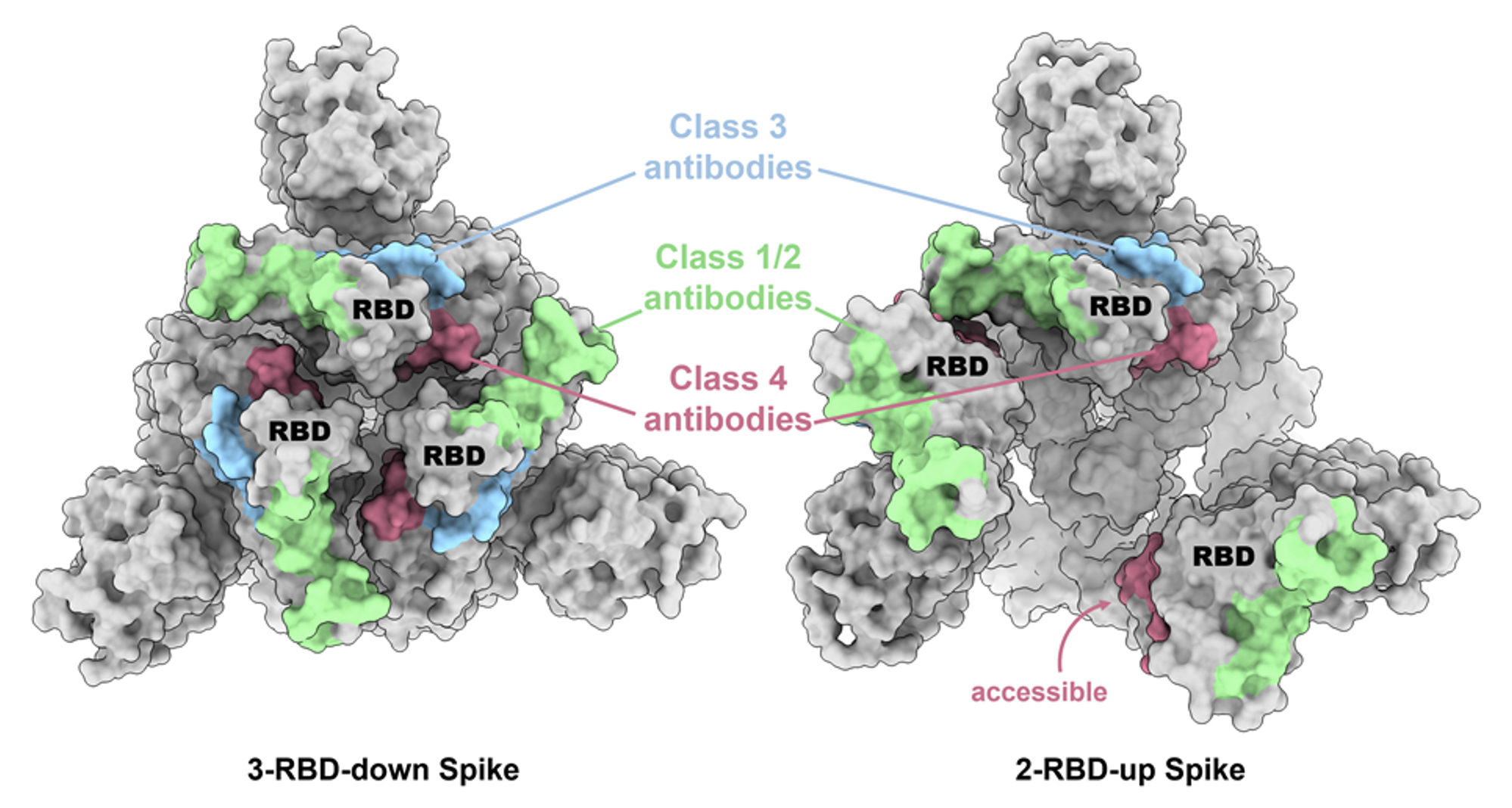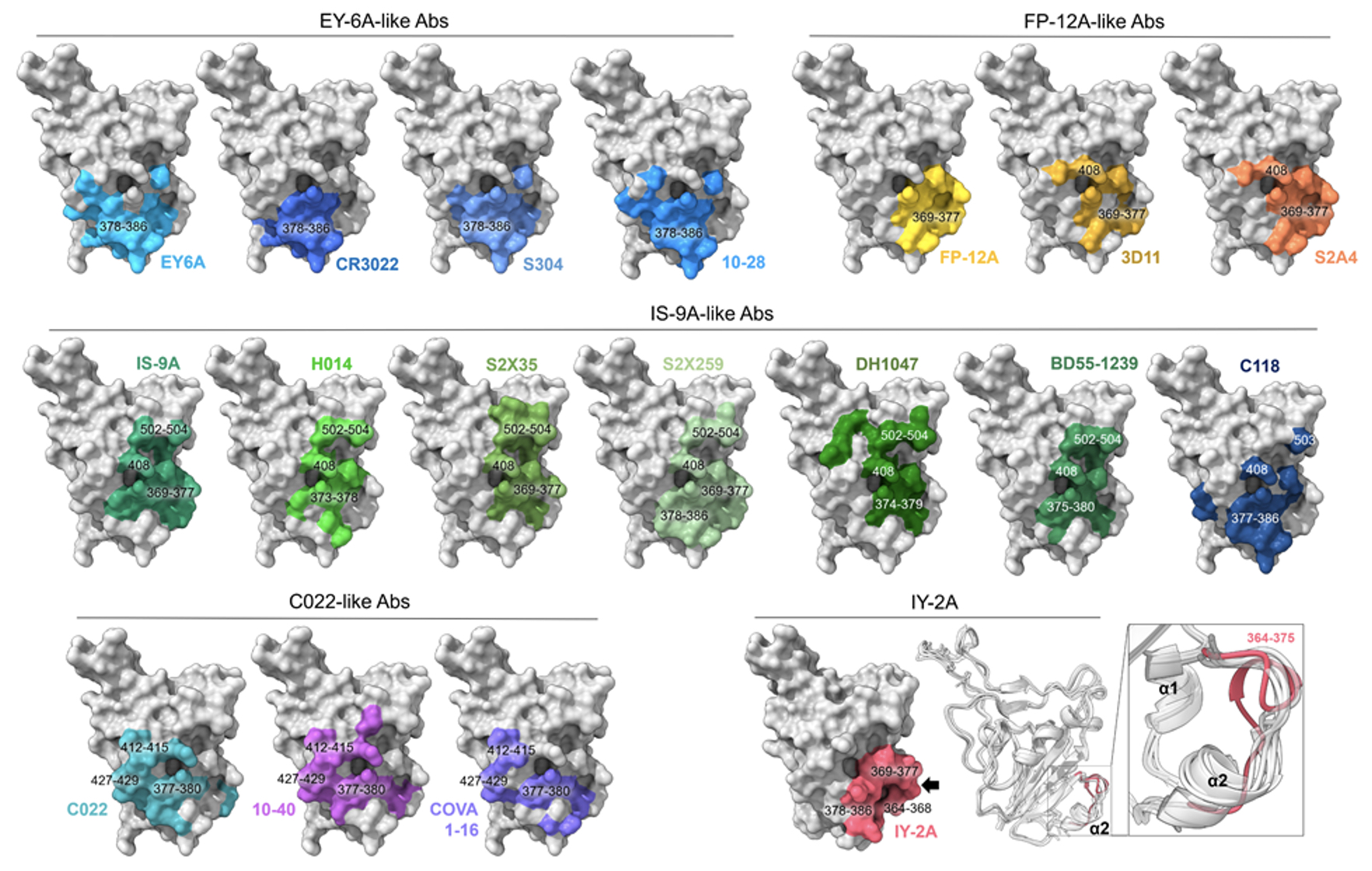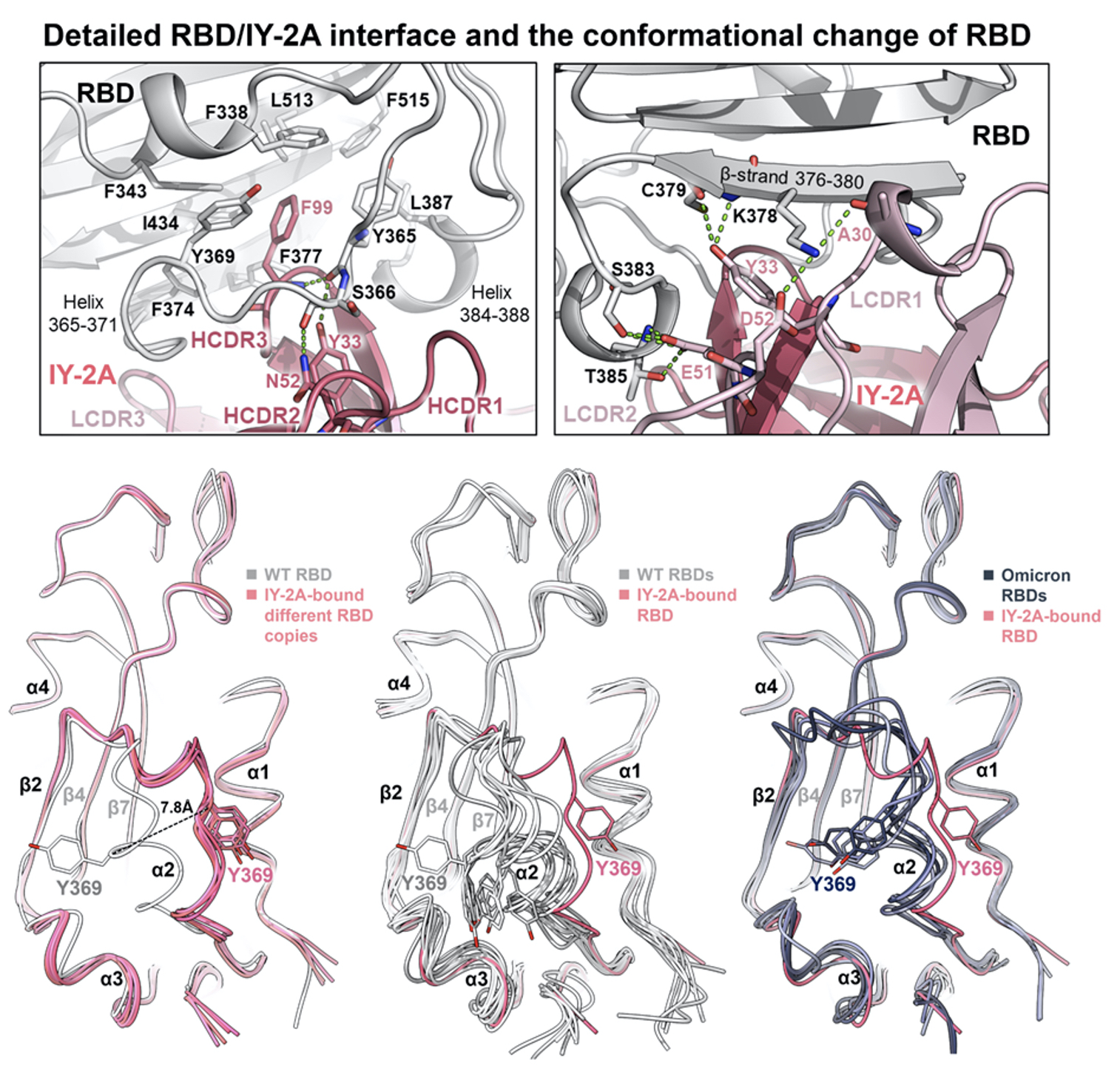Structural basis for a conserved neutralization epitope on the receptor-binding domain of SARS-CoV-2
- Details
- Published: Monday, 30 January 2023 10:18
The COVID-19 pandemic seems to be fading away from our daily life, but the threat of a recurring circulation of new variants still haunts. While the vaccines continue being developed for a preventive purpose, the neutralizing antibodies stand in the last line of defense as a therapeutic tool. A broad cross-reactive antibody is always in demand, but the rapid antigenic variation of SARS-CoV-2 keeps surprising us that a previously ultraefficient antibody could totally fail to neutralize a new variant.
In the latest publication on "Nature Communications", exciting findings were reported by a collaborative team led by Dr. Che Ma in the Genomics Research Center and Dr. Kuan-Ying Huang in the National Taiwan University Hospital. From the locally recruited individuals in Taiwan, they identified a panel of eight monoclonal antibodies that are all targeting a cryptic yet conserved epitope of the receptor binding domain (RBD) of the surface Spike protein of SARS-CoV-2.
These specific anti-RBD antibodies are called the class 4 antibodies, and such classification is based on the epitope where they bind. Simply put, the class 1/2 antibodies bind to the very top region of the RBD, which is the farthest place in the Spike protein from its anchor on the virus membrane; the class 3 antibodies bind to the outer exposed surface of the RBD, and the class 4 antibodies bind to the inner buried surface of the RBD, when all of three RBDs are in the down conformation.
 |
| Figure 1: The receptor binding domain(RBD) of the surface Spike protein of SARS-CoV-2 |
This means only when the RBD is lifted up, can the class 4 antibodies approach and bind. That is why the class 4 epitope is also called cryptic, because it is not always accessible. And also due to this fact, the class 4 epitope is under less evolutional stress and the class 4 antibodies have a higher chance to be broad cross-reactive.
And within the class 4 group, there are also differential preferences of binding sites among antibodies. Huang et al. found that there are some antibodies preferring to the lower part of the epitope, some to the upper, and some towards the edge of the class 3 epitope.
 |
| Figure 2: Differential preferences of binding sites among antibodies |
Extensive functional analyses followed their identification. They tested these antibodies in the recognition strength, the binding kinetics, the neutralization potency against different variants including Omicron BA. 5, and the cross-reactive activity against sabercoviruses.
Although it was a little disappointed that some of the class 4 antibodies failed to neutralize after the Omicron variants emerged earlier this year, one outstanding antibody, IY-2A, induces a conformational change of the RBD and creates a new epitope that was never reported, bypassing all mutations in all the known variants so far.
 |
| Figure 3: Detailed RBD/IY-2A interface and conformational change of RBD |
This exciting finding was impossible without detailed structural studies of the RBD-antibody complex. Three pairs of crystal and cryo-EM structures were released with this paper, providing an atomic comparison between antibodies in terms of their different behaviors in neutralization.
Furthermore, the broad cross-reactive antibodies can also be used as a guidance of vaccine development. Interestingly, the authors found that the mRNA-based vaccine could elicit more class-4-like antibodies which may have a higher chance to protect individuals against newly emerging variants in the future.
The paper titled “Structural basis for a conserved neutralization epitope on the receptor-binding domain of SARS-CoV-2” can be read online at: https://www.nature.com/articles/s41467-023-35949-8